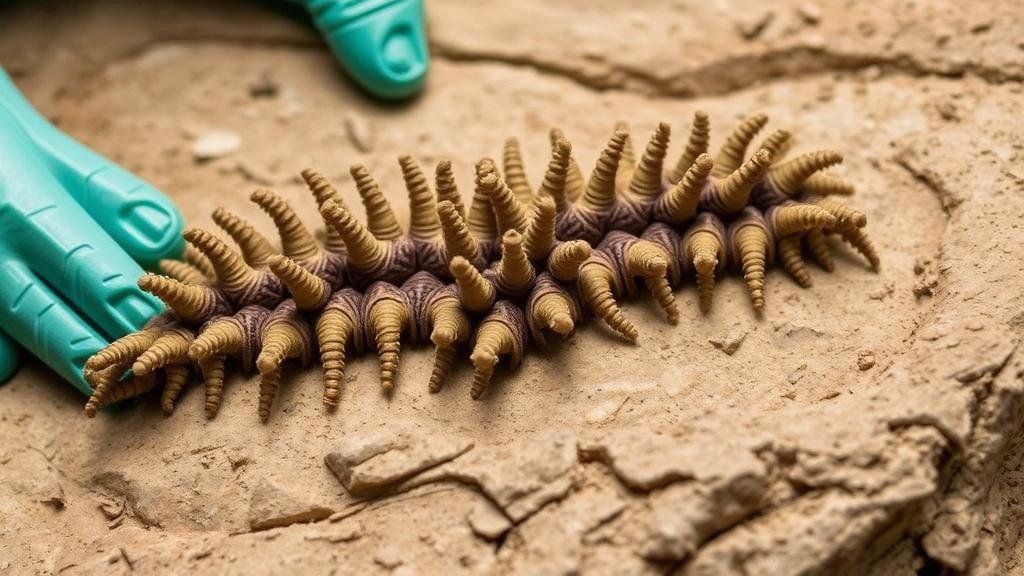Unearthing fossilized crinoids in the limestone beds of the Midwest, remnants of ancient marine life.
Unearthing Fossilized Crinoids: A Guide for Rockhounds in the Midwest
The Midwest region of the United States is renowned for its rich geological history, particularly evident in its stratified limestone beds. Among the treasures embedded within these ancient rocks are crinoids, often referred to as sea lilies. These fascinating marine organisms offer a glimpse into a time when the Midwest was submerged beneath warm, shallow seas. For rockhounds and mineral collectors, fossilized crinoids represent an exciting opportunity to explore, learn, and expand their collections.
The World of Crinoids
Crinoids belong to the echinoderm family, which also includes starfish, sea urchins, and sea cucumbers. have existed for over 500 million years, making them one of the oldest groups of animals still in existence. Crinoids are characterized by a unique stalk that anchors them to the sea floor, and a crown that captures food from the water column.
What Makes Crinoids Unique?
Crinoids exhibit a distinct anatomical structure, comprising a stem (stalk) that can be several centimeters to over a meter long, a calyx (body) where the arms extend, and numerous feathery arms that filter food from the water. This morphology can vary significantly across different species. Studies estimate that there are approximately 600 living species of crinoids today, with many more varieties recorded as fossils.
Fossilization Process
The process by which crinoids become fossilized is intricate. Typically, their soft tissues decompose, leaving behind the more durable parts, such as the calyx and stems. Over millions of years, sedimentation covers these remains, and minerals seep in, replacing organic material through a process called permineralization. end result is a rock-solid crinoid fossil often preserved in limestone, which is prevalent in many Midwestern states.
Locating Crinoids in the Midwest
The Midwest is rich in limestone formations that serve as ideal hunting grounds for crinoid fossils. States such as Indiana, Illinois, and Missouri present numerous quarries and roadcuts where fossil hunting can yield fruitful results.
Key Locations for Collecting Crinoids
- Central Indiana: The Salem Limestone is well-known for its abundant crinoid fossils.
- Illinois: The Warsaw Formation along roadcuts yields a variety of fossilized marine life, including crinoids.
- Missouri: The Burlington Limestone is another rich source of crinoid fossils.
Collecting Tips for Rockhounds
For aspiring fossil collectors, particularly rockhounds interested in crinoids, effective strategies can enhance the collecting experience. Here are some practical tips:
- Research Local Regulations: Ensure that fossil hunting is permitted in your chosen areas, especially in state parks or private lands.
- Equip Yourself Properly: Bring essential tools such as a rock hammer, chisel, safety goggles, and appropriate clothing for rugged terrain.
- Look for Signs of Fossilization: Areas where the limestone is crumbling or show signs of weathering may reveal hidden fossils.
- Be Patient: Fossil hunting often requires time and perseverance; take your time to meticulously examine rocks and sediments.
Understanding the Value of Crinoid Fossils
Crinoid fossils possess both aesthetic and scientific value. Collectors prize them for their intricate structures and beauty, often incorporating them into jewelry or display collections. The value of individual fossils can vary based on factors including rarity, condition, and whether the specimen includes rare morphological features. For example, well-preserved specimens with intact stalks or unique coloration can fetch considerable prices at fossil trade shows or auctions, sometimes exceeding several hundred dollars.
Conclusion
Unearthing crinoid fossils provides not only a connection to the distant past but also enhances the experience for rockhounds and mineral collectors. By adhering to effective collecting practices, adhering to regulations, and respecting natural sites, enthusiasts can ensure that their passion for geologic history continues to thrive. Whether as a hobby or a professional pursuit, fossil hunting in the limestone-rich landscapes of the Midwest can be both rewarding and educational, further unraveling the mysteries of ancient marine ecosystems.



